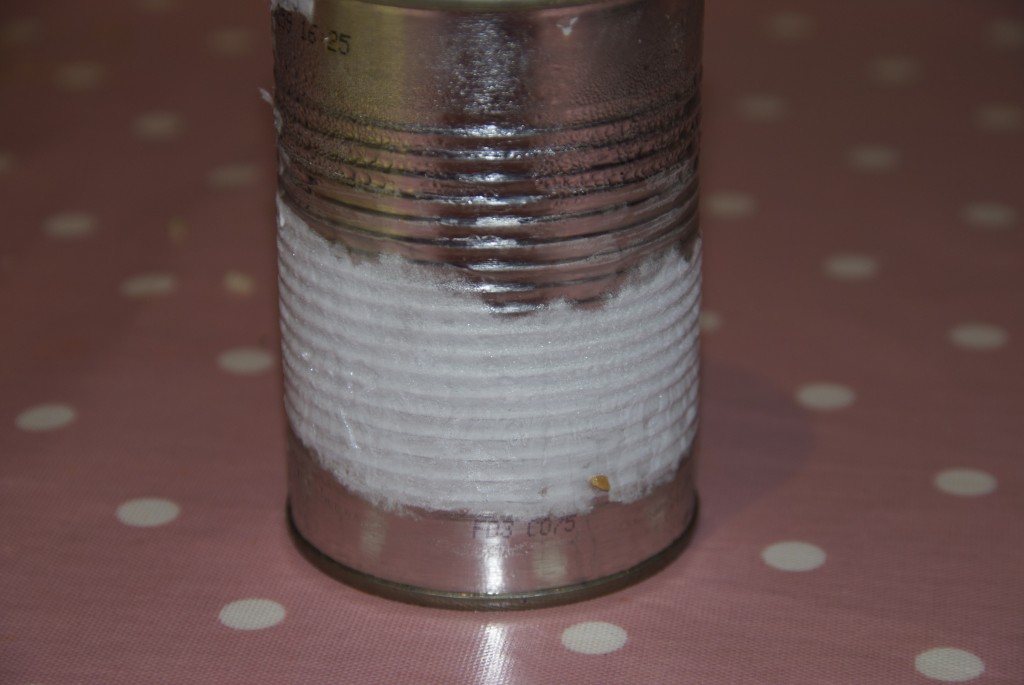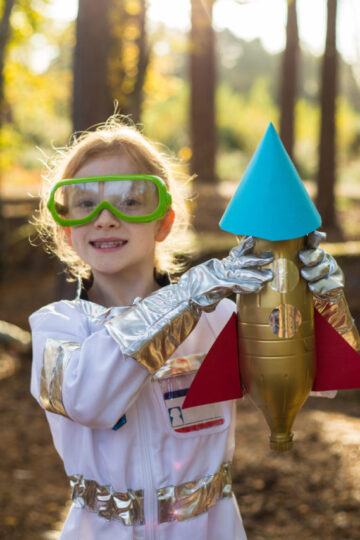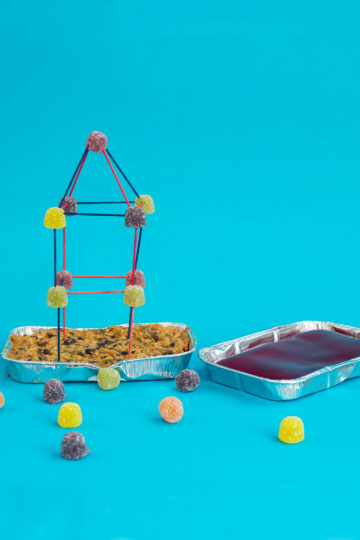Today is day 2 of our week of icy experiments. You can see yesterday's fun with freezing here.
When we left the house yesterday to go to school, Z and S were fascinated by the frost on the car and ground, so we thought we would try to make some at home.

Frost on a can science experiment
A clean and empty tin can
Crushed ice
Water
Salt
How to make frost on a can
Fill the tin can about half full with ice and add 2 tablespoons of salt and water.
Wait and watch the frost form. Keep adding salt and water if you don't see frost start to appear after a few minutes.
How does frost form?
The air around us can hold a lot of water, which is called water vapour. You can’t see it, but it’s usually there (especially in a kitchen). We can often see this water vapour when it condenses on windows, cars, grass and cobwebs. We call this dew. Cold surfaces generally make the water vapour condense because colder air can’t hold as much water so what it can’t hold turns into droplets on surfaces.
If the surface is very cold (below the freezing point of water) the condensed water vapor freezes, this is what we see as frost.
In our experiment, we filled a can with crushed ice and water. This makes the water and the can sit at around the freezing point of water (zero degrees Celsius). To make the water even colder, we added salt. Salt lowers the melting point of ice, but by doing so it means that the surface of the can is actually below freezing point. This makes the water vapour in the air condense and freeze on the can.
Look closely at the frost. You can see crystals of ice growing on each other. Next time you see frost outside, take a closer look
See here for more ice experiments.
Last Updated on January 9, 2025 by Emma Vanstone




Jamie says
I LOVE your blog. Entertaining a 2 and almost 4 year old is not easy. There are so many things on here that I can't wait to teach them. Thank you so much for puting this all together. I'm your newest follower.
Would love to see you DIY Home Sweet home.
Jamie
http://diyhshp.blogspot.com/
P.S. I have a linky every Monday. Would love for you to stop by and link up.
Kelly says
This looks like fun, we will try it out 🙂 And I've just passed on an award to you (you don't have to do anything with it... up to you!) http://happywhimsicalhearts.blogspot.com/2011/11/lucky-week.html
Warm wishes, Kelly
Lindsi B says
I'd love you to link up with us.
http://www.toysinthedryer.com/2011/12/fun-stuff-fridays-2.html
Suzanne says
I think my buddies and I will try this soon. I have had the hardest time explaining the frost we see on the grass in the morning. This idea is perfect!
marie willson says
awesome